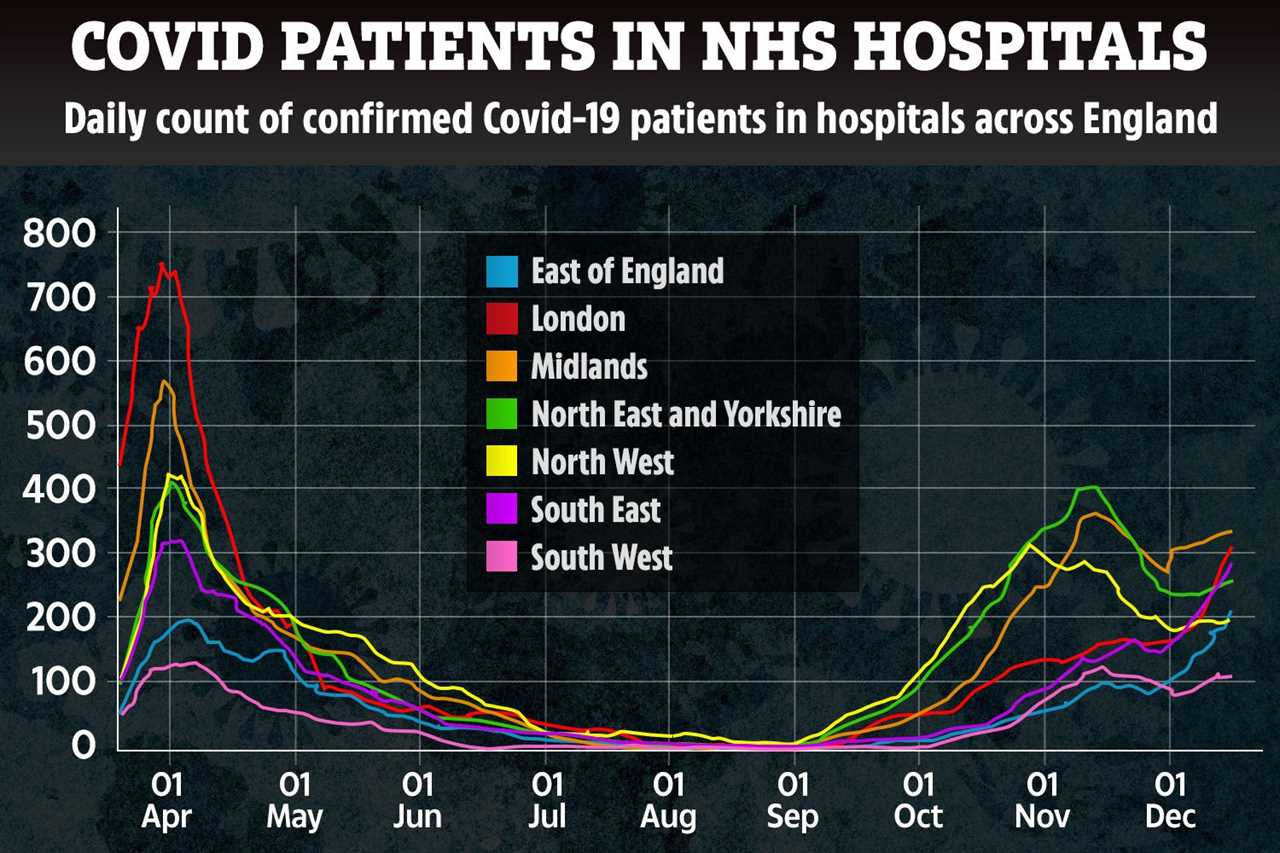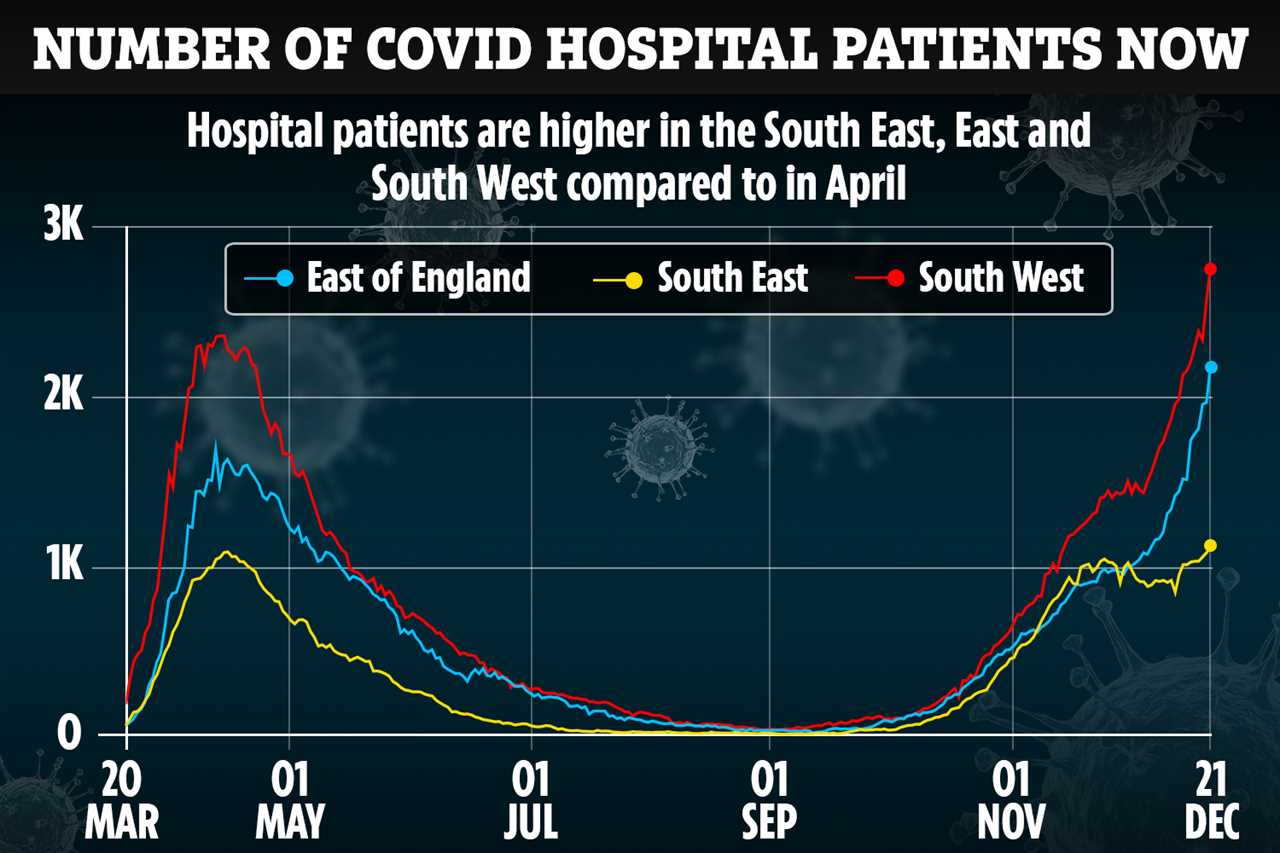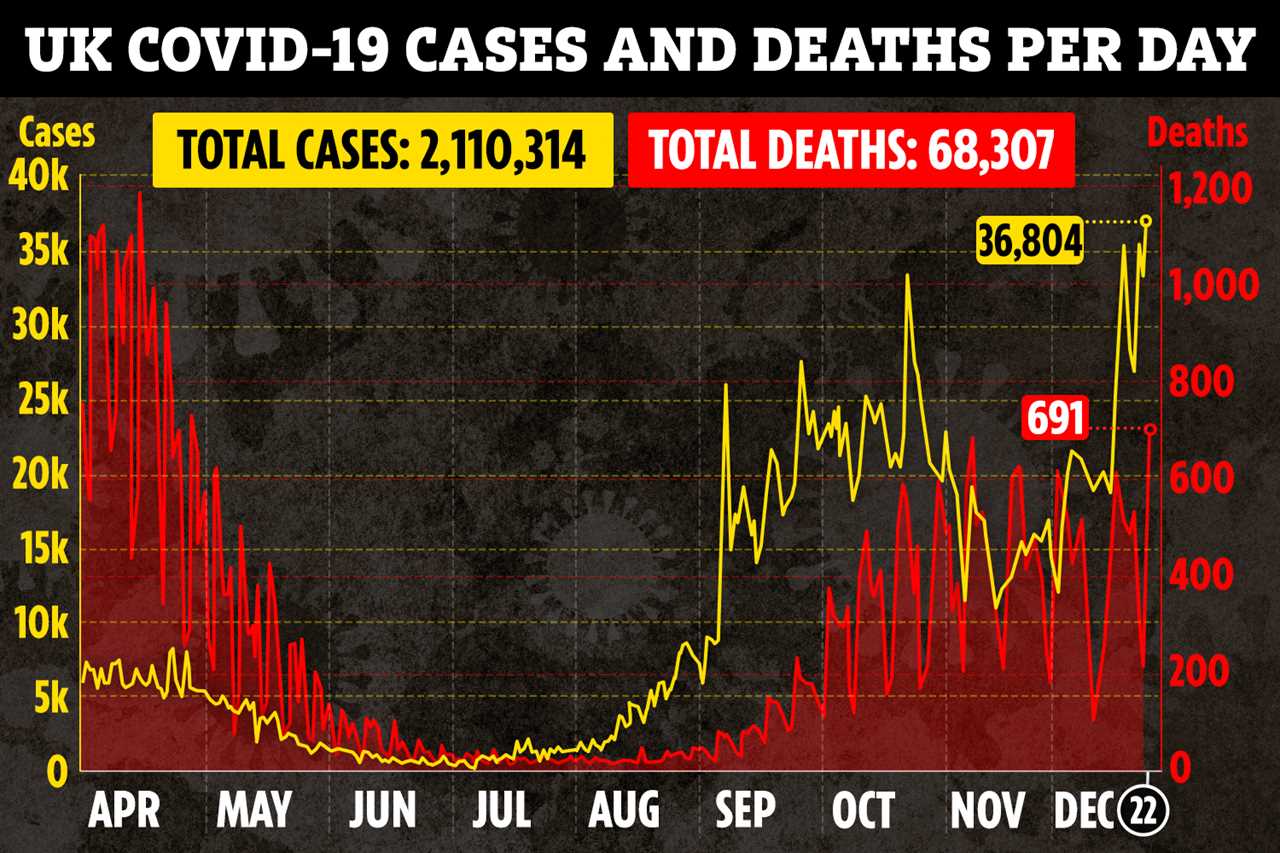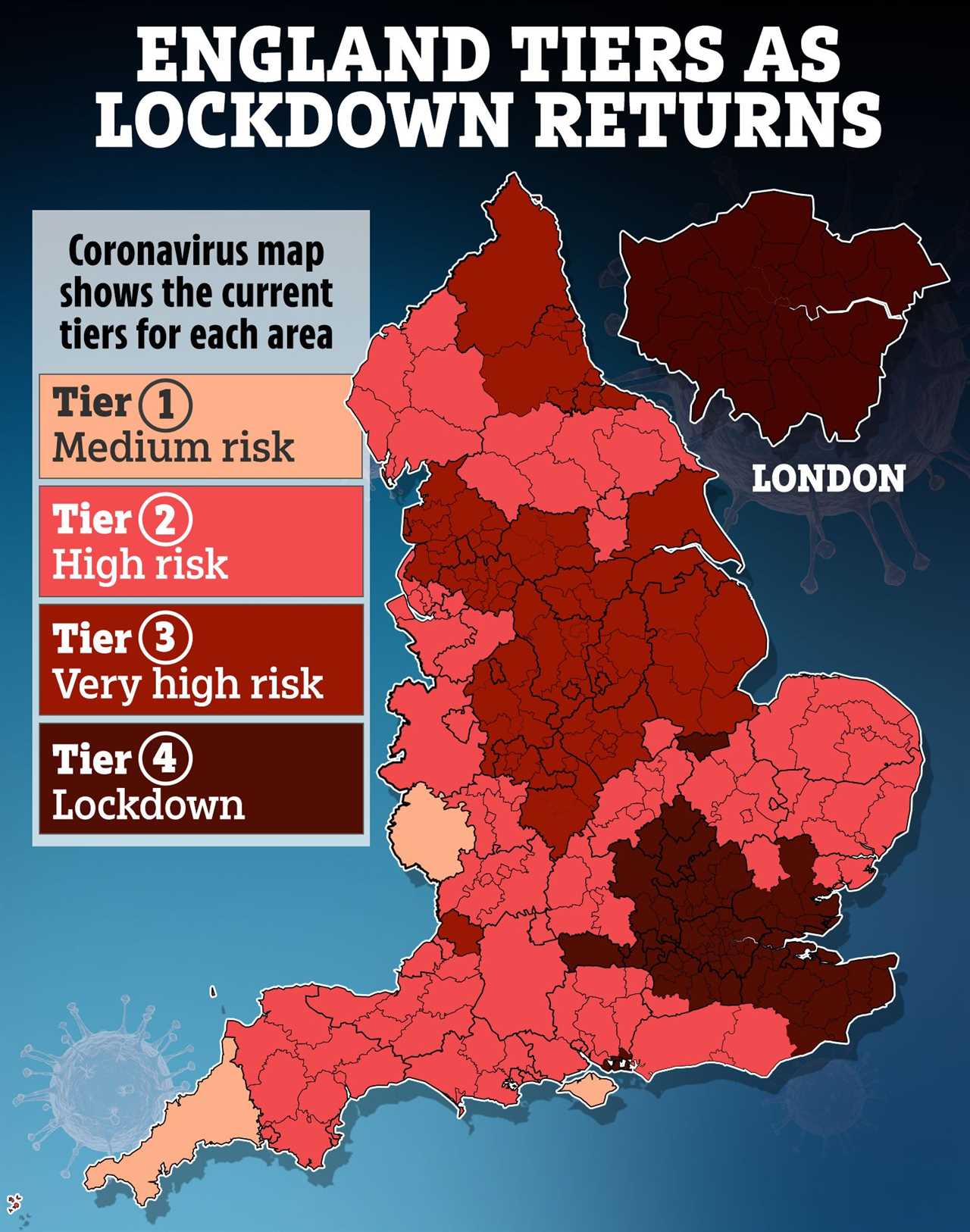PARTS of the UK are treating more Covid patients in hospitals than in April – the peak of the first wave.
Official data from the Department of Health shows a number of regions hit record high numbers of hospital patients on December 21.


It suggests the second wave is reaching a severity worse than in the spring, when Covid first swept Britain.
The NHS is set to face a bleak winter trying to cope with the surge of Covid patients, with pressures already high at this time of year.
Last week the Government set up a page on the coronavirus dashboard which allows you to see how many hospital patients there are in your area, now and over the course of the pandemic.
You can view it here, by selecting the “healthcare” tab, and then filtering the data to NHS trusts, and finding your local trust.
Hospitals have more patients than in April
The South East, South West, and East of England now have more Covid patients on hospital wards than in April.
On December 21, there were 2,163 patients in hospital with the killer disease, up from 1,954 the day before.
It has been increasing steadily over the past week.
Inpatients have not been anywhere near this high since April 4, when the figure was 1,679.
Meanwhile, in the South West, data from the Department of Health shows there were 1,112 Covid hospital patients on December 21.

It’s several higher than on April 15, when there were 1,080 cases.
In the East of England, hospitals were treating 2,163 Covid patients on December 21, which has risen from 1,734 just five days prior.
The South East and East of England are among the areas battling some of the highest Covid-19 infection rates.
The South West is seeing cases rise drastically, but is still recording case rates below the national average.
LONDON CALLING
Most of the South East is now in Tier 4, including London, with rules essentially the same as lockdown.
However, London is still well below its first wave peak of Covid hospital patients.
This is despite the fact several boroughs – including Havering, Redbridge and Enfield – reporting more cases per 100,000 people than any part of England.
There were 3,367 patients in London hospitals on December 21, which compares to 5,201 on April 9.
But this is still double the figure from just one month ago, when 1,591 Covid patients were in London hospitals.
NHS trusts are facing pressure as the number of cases continue to increase across the city.

Barts Health NHS Trust, which serves around 2.5 million people in east London, said on Thursday it has moved to the “high pressure” phase of its winter escalation plan.
A Barts Health spokesman said this was “to keep our patients safe”.
“These include deferring some routine procedures over the coming days so we can redeploy staff and increase the number of critical care and general beds available,” they said.
The trust, which operates across four major hospital sites The Royal London, St Bartholomew’s, Whipps Cross and Newham, said the plan will not affect cancer patients.
The new tiers system put in place by the government earlier this month is partly based on hospital admissions and NHS capacity.
Pressure on the NHS is seen as the most important factor when deciding when to move an area up a tier.
If more people become seriously ill with coronavirus and local NHS services are forced to stop non-Covid related treatment there could be huge collateral damage.
It could mean cancer treatments are postponed, heart disease screenings do not take place, and a massive backlog of other health problems mean excess deaths jump because people did not have access to the NHS.
This is the most dangerous place a local area can be in – when there is a threat the local NHS could be overwhelmed – and this is when ministers will consider putting areas into the most restrictive rules.
But if there is very little pressure on the NHS, it could also mean it is able to stay in its current Tier or even move down a Tier.
Did you miss our previous article...
https://trendinginthenews.com/covid-19/jet-ski-romeo-28-who-made-daredevil-journey-for-love-is-released-from-jail-and-heading-to-scotland






